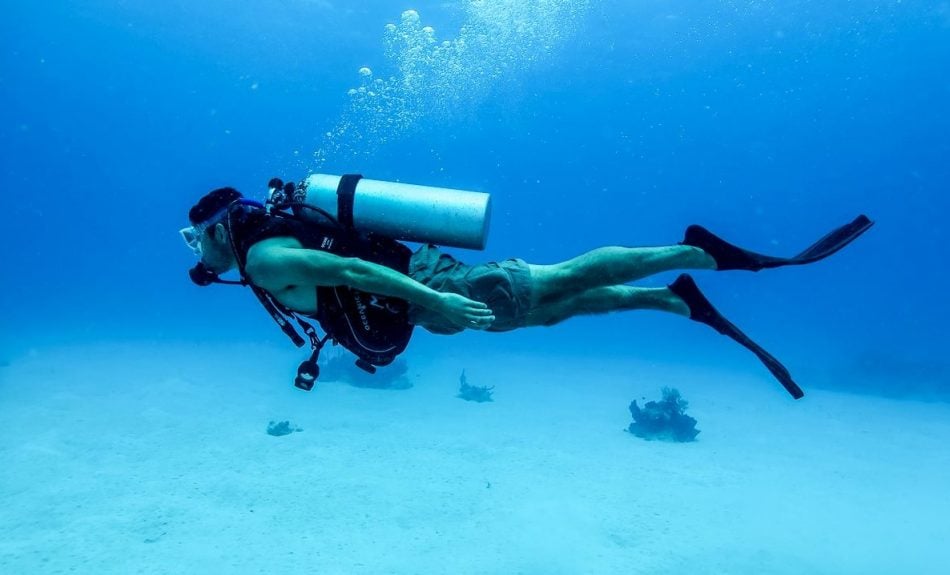Fins for scuba diving or snorkelling can seem like a deceptively simple piece of dive equipment to buy. However, in conjunction with your own legs, they are your engine in the water, which ultimately makes them a crucial piece of gear to consider when purchasing your kit. So we’ve provided you with some things to think about and questions to ask yourself before you purchase gear.

1) What are you using your fins for?
Are you looking for fins to dive with or to snorkel with? If you’re snorkelling, are you casual about it or are you freediving, spearfishing, etc? If you’re snorkelling once or twice a year to check out reefs and fish from the surface while on vacation, you probably want to prioritize something lightweight and somewhat compact so that they are easy to pack like the Bare Fastback. On the other hand, if you are fairly aggressive about your snorkelling, tending to duck dive down to get a close look at the reef and cover some distance, particularly if spearfishing, then you’ll probably want a longer, more powerful fin. It might be harder to pack but that’ll be worth it when you’re in the water.
Additionally, if you’re going to be scuba diving with your fins then again you’ll want to look for something with some power to it. However, in terms of length and packability you may be able to opt for something between a snorkelling and freediving fin.
If you are cave or wreck diving, you want a relatively short but powerful fin, like the OMS Slipstream, that won’t stir up much silt behind you.
2) Where will you be using your gear?
Will you be diving or snorkelling primarily in cold water or warm water. You can buy fins that will work for both, like a Tusa Vesna, but it is best to purchase a pair of fins with your primary environment (and the rest of the gear you use for it) in mind. In cold water, keep in mind you’ll be wearing considerable exposure protection over your feet. You may even be in a drysuit. This means you’ll need a fin with a large foot pocket and an open back with an adjustable strap or a spring strap to ensure a snug, but comfortable fit. In a drysuit many divers experience floaty feet and some rubber fins, like the Scubapro Jet, are fairly negatively buoyant in the water which can really help counteract this buoyancy and keep you trim.
In warm water, you don’t want a heavy fin weighing you down. A full foot fin may work just fin either on a bare foot or with a light neoprene sock if you are prone to blisters. Some like the adjustability and versatility and power of an open foot/strap fin. In which case an option light enough for warm water is the Atomic Blade fin.
Happy diving!